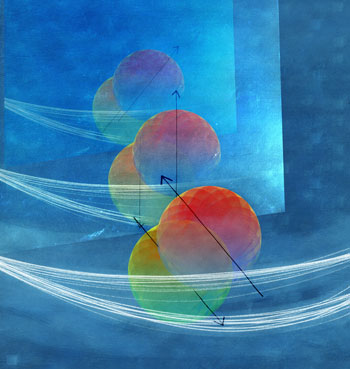| Feb 14, 2013 |
Combining quantum information communication and storage
|
(Nanowerk News) "This work represents the first step towards creating exotic mechanical quantum states. For example, the transfer makes it possible to create a state in which the resonator simultaneously vibrates and doesn’t vibrate," says Mika Sillanpää, professor at Aalto University, who runs the research group.
Combining quantum information communication and storage
|
|
A qubit is the quantum-mechanical equivalent of the bits we know from computers. A traditional bit can be in a state of 0 or 1, while a qubit can be in both states at the same time. In theory, this inconceivable situation allows for a quantum calculation in which the operations are performed simultaneously for all possible numbers. In the case of a single qubit, this means zero and one, but as the number of qubits increases, the amount of possible numbers and simultaneous calculations grows exponentially.
|
 |
| Merger of three quantum systems: superconducting quantum qubit, or, qubit (spheres) interacting with two different resonant cavities. (Image: Juha Juvonen)
|
The quantum state of a qubit is very fragile and easily disturbed between and during the operations. The key to successful quantum calculation is being able to protect the qubit state from disturbances in the environment.
Combining quantum information communication and storage
|
"In this case, the qubit state can be stored as vibration, thus preserving the state for much longer than the qubit itself. The resonator also functions as a mechanical quantum memory, which is something that an ordinary memory can't do," explains Juha Pirkkalainen, who is doing his dissertation on the topic.
Combining quantum information communication and storage
|
The novel work combines two Nobel Winner's achievements
Combining quantum information communication and storage
|
|
The work ("Hybrid circuit cavity quantum electrodynamics with a micromechanical resonator") combined the achievements of both winners of this year’s Nobel Prize for Physics. The qubit state was measured using a superconducting cavity in the same way that Serge Haroche measured atoms, and the qubit state was also linked to mechanical movement as in David Wineland’s experiments. In contrast to these larger-scale measurement arrangements, the experiment at the O.V. Lounasmaa Laboratory was prepared for a tiny silicon microchip. This made it possible to cool the sample to near absolute zero temperatures and then use microwaves.
|

